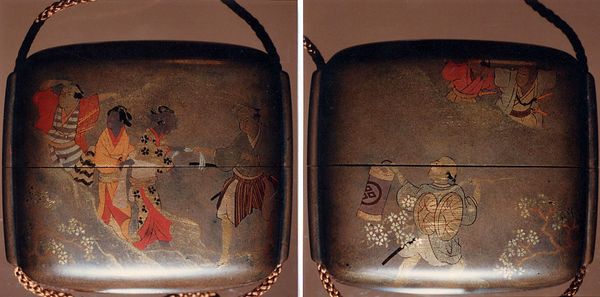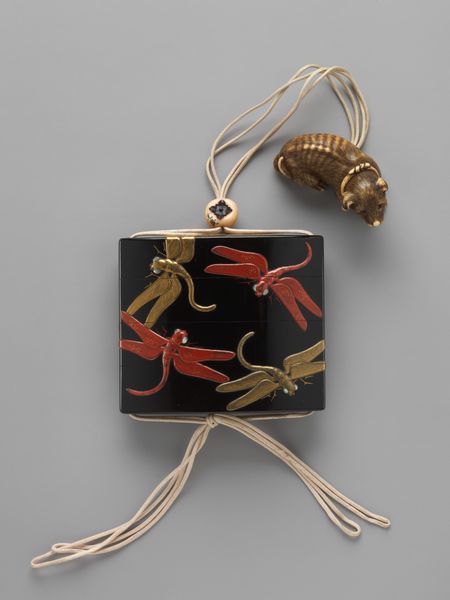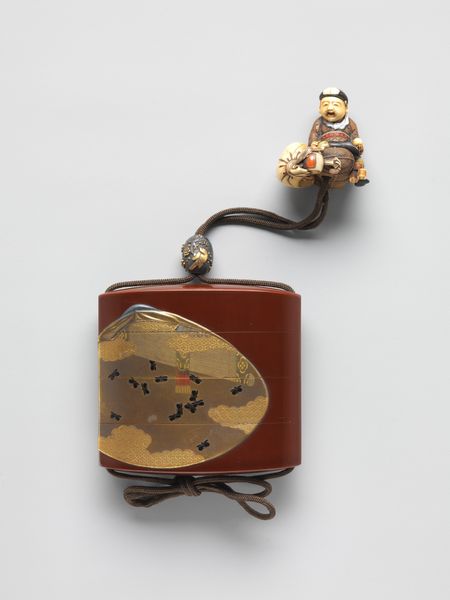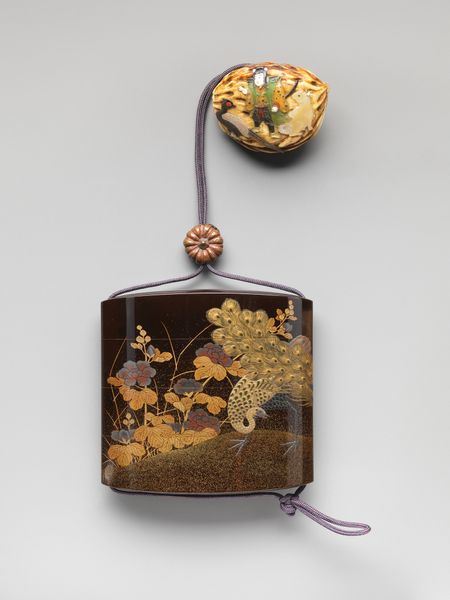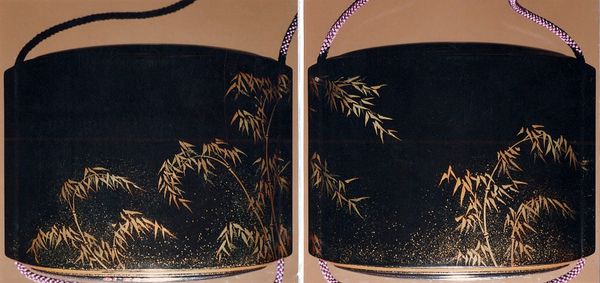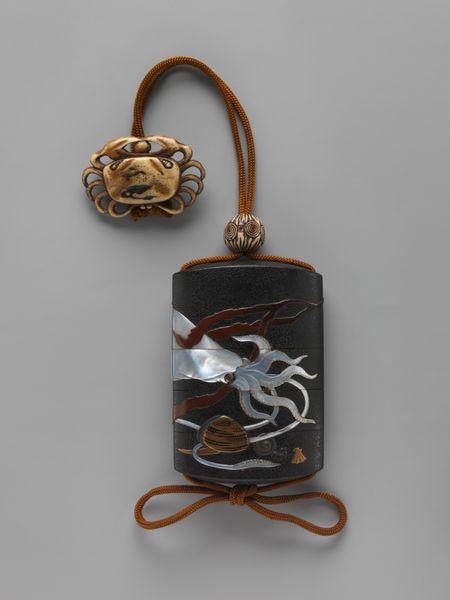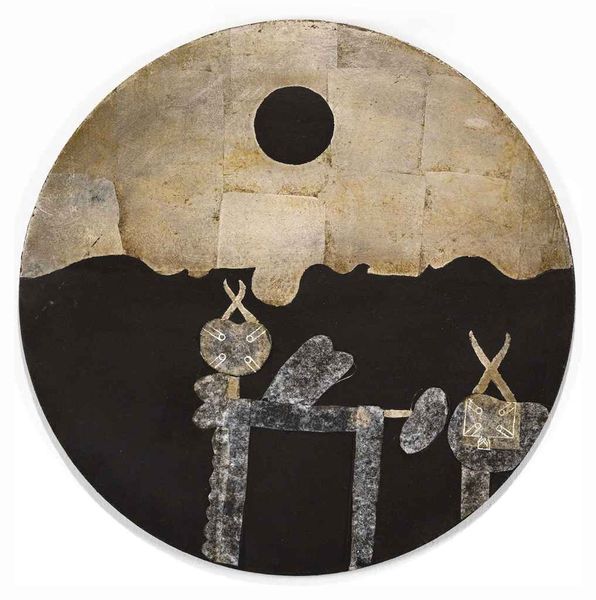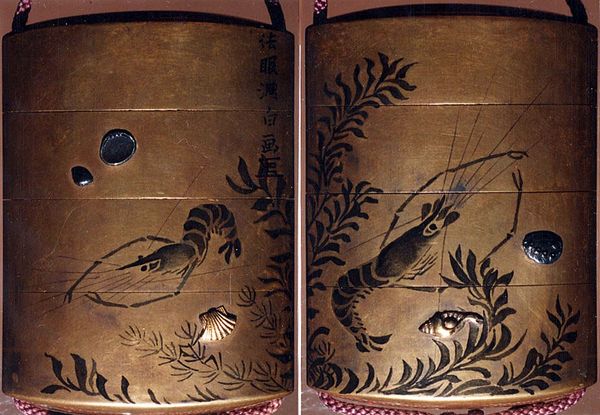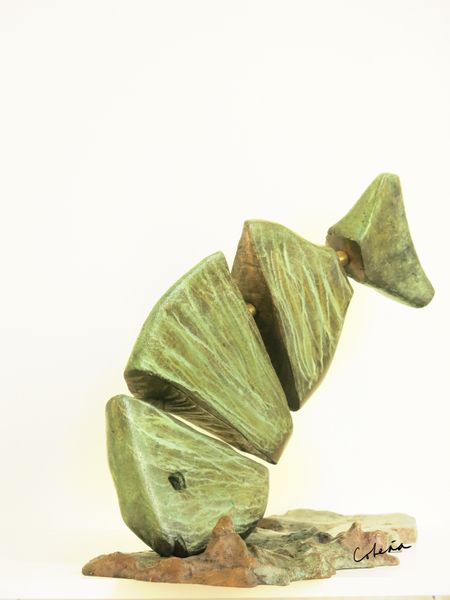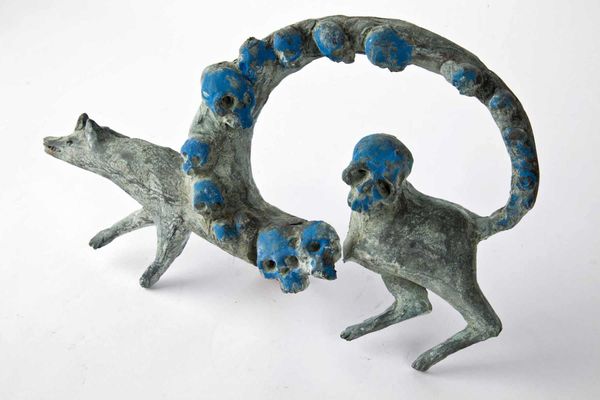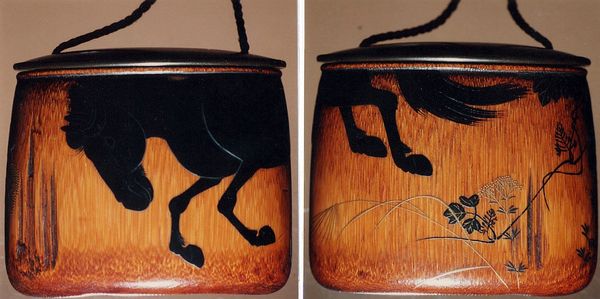
ceramic
#
gouache
#
water colours
#
animal
#
asian-art
#
ceramic
#
japan
#
mixed media
Dimensions: 2 1/16 x 1 15/16 x 3/4 in. (5.3 x 4.9 x 1.9 cm)
Copyright: Public Domain
Curator: I'm drawn in by the hushed quality of this inrō; it's titled "Case (Inrō) with Design of Standing Deer." Attributed to Ogata Kōrin, it hails from the 18th century. Editor: Immediately I’m taken by how subdued the tones are; the surface, perhaps ceramic, has this matte, almost stone-like finish and those deer feel like ghosts. There's a fragility that comes to mind right away. Curator: Absolutely. Inrō were essentially these portable, stacked cases used in Japan to carry small personal items, secured by a cord and netsuke. What’s fascinating here is how Kōrin elevates this functional object into something of delicate beauty. The deer design, split across the case's sections, becomes a narrative unveiled as you open it. It almost becomes like opening a book. Editor: Exactly! It highlights how something traditionally considered ‘craft,’ here this decorative container, becomes infused with high art sensibilities by this disruption of surface and the choice of inlaid materials. This moves it beyond simple utility. It is transforming labor and material into status. You also see the care taken; the joints line up impeccably, even though it’s made of segments that can move independently of each other. It strikes me that the value isn't just aesthetic but social. Curator: Yes! And in terms of sheer aesthetics, I get lost imagining what Kōrin's was thinking, choosing the animal—those deer, seemingly caught mid-motion on what feels almost like an ephemeral stage... There's a sense of poetry, a meditation on nature, perhaps reflecting a wish for gentle ease in the day-to-day world? Editor: Well, considering its small scale, the choice of inlay, this really feels deliberate—and those shimmering materials. This is about creating something both precious and functional, blurring these imposed categories, don't you think? Curator: I see the piece as a reminder to slow down, observe nature, and discover the grace in simplicity, just how light shimmers differently. Editor: The ‘Inrō’ design reflects the relationship between materiality and how they're contextualized within Japanese consumer culture and the labor required in crafting and acquiring them. It speaks about our history with luxury and art as a sort of class division. Fascinating.
Comments
No comments
Be the first to comment and join the conversation on the ultimate creative platform.



